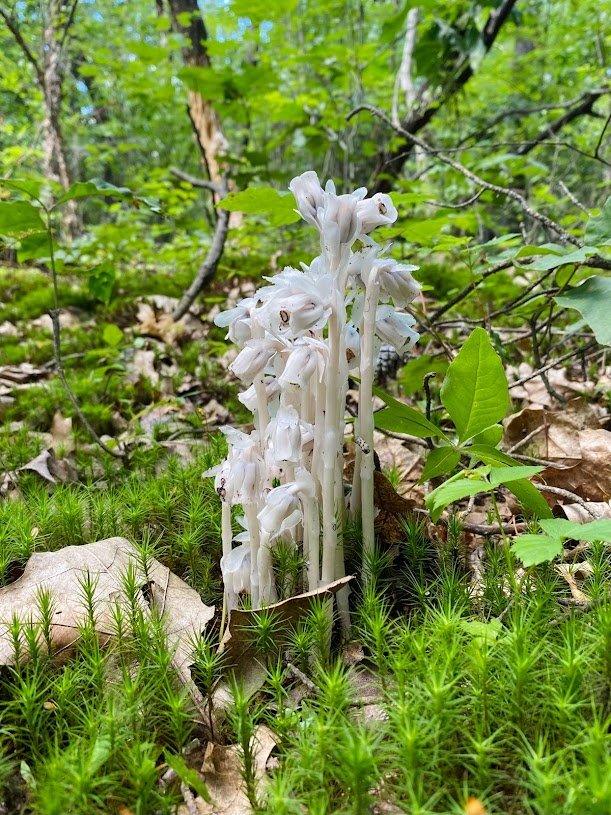
Everything You Need to Know About Ghost Pipe Plant (Monotropa Uniflora)
Share
Everything You Need to Know About Ghost Pipe Plant (Monotropa Uniflora)
Ghost Pipe plant, scientifically known as Monotropa Uniflora, is a fascinating and mysterious plant that has captured the attention of botanists and nature enthusiasts alike. While many plants have been documented and used over thousands of years in various cultures, The first written account of Monotropa uniflora is attributed to Carl Linnaeus, a Swedish botanist, physician, and zoologist. He described the plant in his book “Species Plantarum” in 1753. Also known as Indian pipe or corpse plant, the Ghost Pipe belongs to the Ericaceae family and is native to North America, Europe, and Asia.
Appearance and Characteristics
The Ghost Pipe plant is unique in its appearance. Unlike other plants, it lacks chlorophyll and does not undergo photosynthesis. This gives it a pale, ghostly white color, hence the name. The plant grows to a height of 6-10 inches and has a single flower that hangs downward. A few variations have been discovered including a pink species that is most commonly found in coniferous forests. If you find a yellow Ghost pipe with multiple florets that is in fact not ghost pipe, but rather a close relative named Monotropa Hypopitys and we will save that for another discussion.
Habitat and Distribution
Ghost Pipe plants are typically found in shaded and damp areas such as forests, woodlands, and thickets. They have a wide distribution, ranging from the temperate regions of North America, Europe, and Asia. Finding Ghost Pipe is not an easy task however as some people search for years without seeing one. While Ghost Pipe can be found in certain areas across the globe it is not comon and patches tend to be quite spread out from region to reigon. Ghost Pipe tends to make its debut for about 1 week per year sometime between June and Late September. A variety of factors impact where and when Ghost Pipe will emerge from its slumber including location, drought, temperatures, over harvesting, shade and other environmental factors. There is no hard and fast rule that says where and when you find it one year you will find it there the next. That is one of the many reasons this plant makes for a fascinating and challenging hunt for nature lovers around the world! IF you decide to put Ghost Pipe on your bucket list of fun plants to forage here is what to look for:
1.) Deep dark shaded forests.
2.) Damp but not soggy soil conditions (Think edges of swamps/bogs)
3.) Places with little to no foot traffic.
4.) Under foliage such as fern leaves and tall grass.
Life Cycle and Reproduction
The Ghost Pipe plant has a unique life cycle. It is a mycoheterotroph, meaning it obtains nutrients by forming a symbiotic relationship with certain fungi in the soil. Instead of tapping directly into the roots of certain preferred trees, Ghost Pipe taps into the mycelium of specific fungi that in turn are tapped into the roots of said trees. The fungi help the plant obtain nutrients from decaying organic matter. The plant reproduces through its small, dust-like seeds that are dispersed by the wind. (Or at least this is the theorized method of reproduction.) Interestingly enough, the Ghost pipe plant grows in in almost rhizome like clusters under the ground, but each "root" detaches individually. The fact of the matter is this mysterious plant has many secrets left to reveal and ethically harvesting ensures we maintain its existence.
Medicinal Uses
The Ghost Pipe plant has been used in traditional medicine by indigenous cultures for various purposes. It is believed to have analgesic, sedative, and anti-inflammatory properties. Some Native American tribes used it to treat headaches, muscle pain, and respiratory issues. Moreover, Ghost Pipe is used as a powerful and natural anti-anxiety alternative. It has successfully been used by many to supplement and even in some circumstances, replace pharmaceutical SSRI's. Reports have shown that Monotropa Uniflora has the ability for some to stop acute and chronic anxiety within minutes when taken in tincture form.
Conservation Status
Ghost Pipe plants are considered vulnerable in some regions due to habitat loss and overharvesting. It is essential to protect and preserve these unique plants to maintain biodiversity and ecological balance.
Conclusion
The Ghost Pipe plant is a captivating and enigmatic species that has intrigued botanists and nature enthusiasts for centuries. Its unique appearance, life cycle, and traditional medicinal uses make it a fascinating subject of study. As we continue to explore and appreciate the wonders of the natural world, let us also strive to protect and conserve these remarkable plants for future generations.

